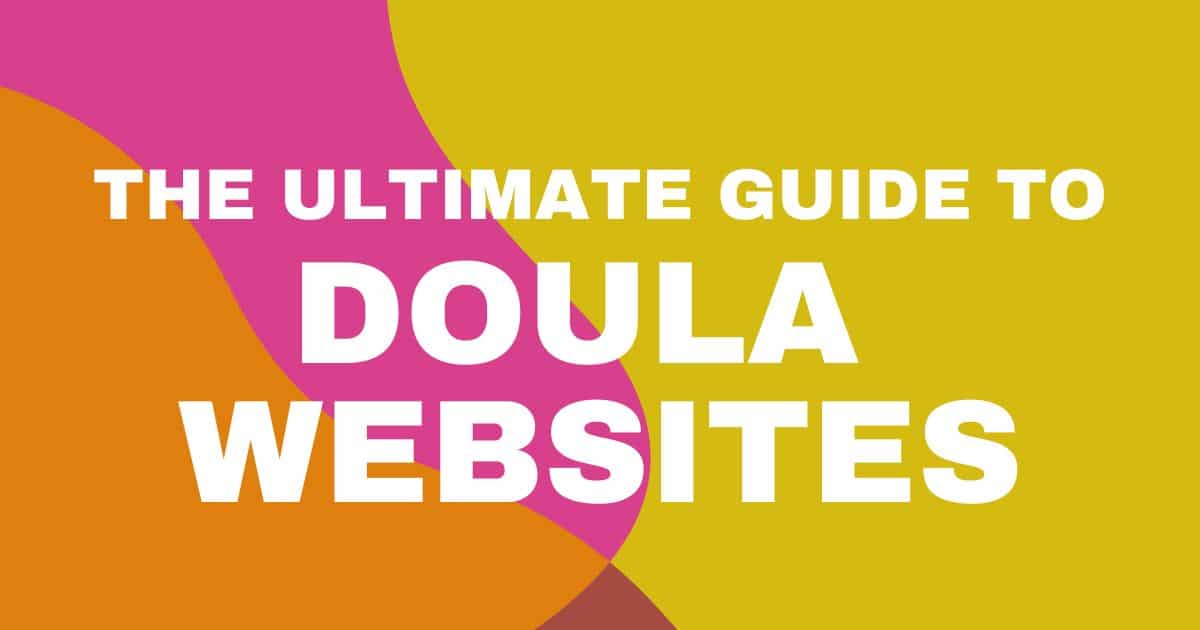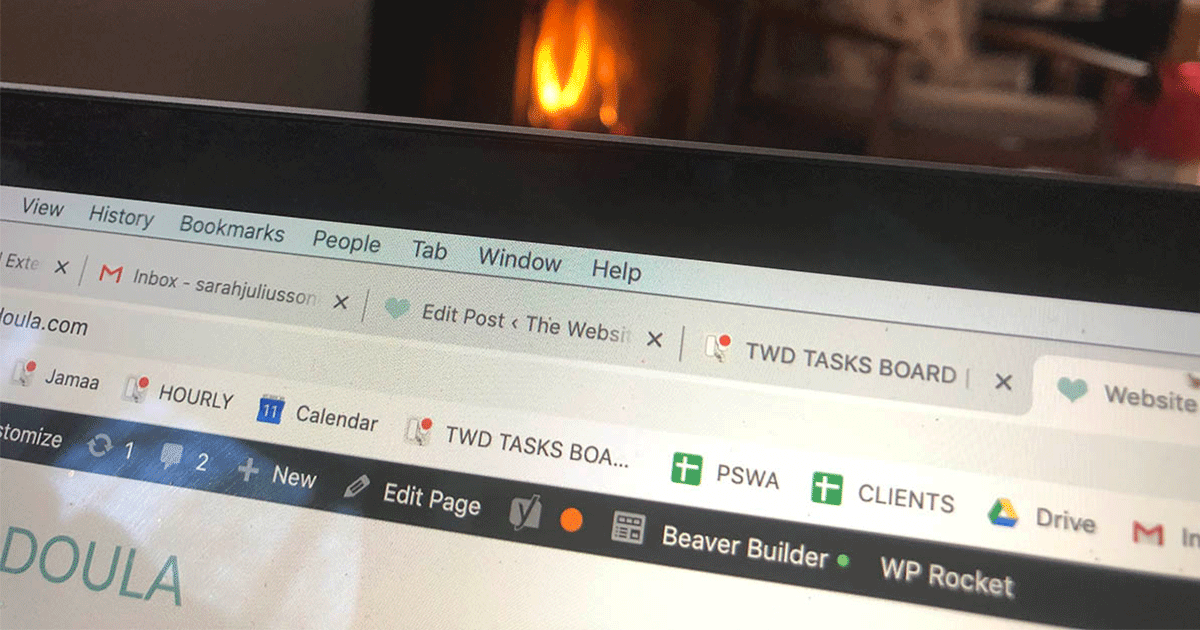10 Ways to Improve Your Blog Traffic

If you have a blog, most likely your focus is usually on what your next post is going to be about – and when you’re going to find the time to write it!
You write a post, you optimize it, choose the perfect featured image, share it on socials or your newsletter, send clients the link when it’s the perfect resource to answer their question… but mostly we forget about it. It simply becomes one of the posts we wrote last year, or 3 years ago… My blog now has over a decade of content on it!
New content is always a good thing – remember, each new keyword or phrase you target expands the number of ways people can find you online. Please, do write new content!
But within your existing content, I promise there are huge opportunities for you to grow your audience.
Why Optimize your Existing Blog Posts?
If you have existing content that is already serving you, why not put some effort into making it even better? You’ll get better, faster results optimizing existing posts than writing a new post and hoping it gains traction.
Knowing which blog posts are working for you also helps you identify related topics to write about in the future (and keywords to target). The more you write about a specific topic area, the more Google sees you as a local expert in that topic.
Note: You still 100% need to write new content! Google loves seeing your site content expand, and every single keyword or phrase you target creates a new pathway for people to find you!
Here are key ways you can take advantage of old blog posts and make them work for you.
7 Ways to Improve Your Search Ranking with your Blog
Find your Best Performing Blog Posts
Take some time to explore your Google Analytics and Google Search Console to see where your traffic comes from, and which posts (and pages) on your site were the most popular ones. It might surprise you. Two of my best performing blog posts are ones I never would have imagined would be this effective.
You’ll see some posts are ranking in the top 10 of search results for that keyword. That’s fantastic! But most traffic goes to the top 3, so if you’re at spot #7, it’s time to give some love & care to that post so it has a chance to move up in rankings. Google is constantly evaluating & re-ranking your site – give it a reason to make you show up first in search results!
Others might be on page 2 or 3 of search results. That’s still a really good place to start from! Some simple upgrades to the content on that post could easily bring it into the top ten. Remember that most of your competitors are not doing a single thing to improve their existing content. This is like stealth business growth – nobody will even realize what you’re doing but you’ll magically go up in the rankings!
I suggest you focus on posts that are in ranking spots 5 – 20 for best results. Then move on to posts that are lower in search results.
1. Add Outside Related Links to your Blog Post
This may seem counterintuitive to you. Why would you want to send someone AWAY from your post? Links to outside resources are called “Backlinks”, and they help your reader discover additional helpful resources online. Google is a fan of these because they make the internet even more connected.
A few examples:
- A blog post about Chestfeeding in Public could link to a local lactation support group and a coffee shop in your neighborhood that has been particularly supportive of new parents.
- A blog post about the logistics of creating Advance Directives written by a Death Doula could include a link to a post written by someone else in the industry about the emotional implications of helping a love one to do so.
- A health coach writing about the importance of carbohydrates in menopausal nutrition could include a link to a related medical study
Feeling stuck? You can even ask an AI tool such a chatgpt to recommend a few external links for you.
2. Identify Related Blog Posts and Site Pages
Linking to related content is an easy way to help site visitors be more engaged on your site. Encouraging site visitors to spend MORE time on your site by offering helpful links to related content will also decrease your “bounce rate” – and therefore increase your authority with Google.
If you’re on WordPress, you can add a simple plugin to identify related posts and automatically link to them at the base of your blog posts. You can also add a visual grid of related posts from the same category or tags below your posts (if I built your site, contact me for help with this – it’s a quick & easy addition to your site.)
When you have multiple posts around a particular theme or topic, it helps build your authority with readers AND with Google. If you’re passionate about a particular topic, most likely you already have some existing content on your site that is related. For example, you mention one of your services, be sure you link to that page on your site. Or if you’ve written one post about How to Choose Cloth Diapers and another on Creating an Eco-Nursery, these two posts should include links to one another.
3. Expand Your Post Content
When you published this post it may have felt like you said everything you needed to say. Perhaps you didn’t want to “bore” visitors with too much information. Short & sweet seemed like the best way to go.
Reality? Google loves content with WEIGHT – that means more words, more links, more more more…
Take a look at a few posts on the same post that are ranking in the top 5 or so search results. What do they have that you don’t? Perhaps your post is 450 words long, and theirs is 832. Maybe they have done a better job at weaving in the target keyword and variations? Their post might have better links within their site & to outside sources. Learn from them, and apply these lessons to your own post!
4. Improve Blog Post Formatting
I invite you to read your blog post with fresh eyes. Are there simple ways you could improve the formatting to both make it easier for Google to scan & rank, and for site visitors to have a better user experience. Here are a few key items to look for:
- Do you have H2 subheaders using the keyword(s) you are trying to rank for?
- Does your post use your primary keyword with a ratio of 1-2% of your content word total? So 1-2 / 100 words would be your keyword or a close variation to your keyword.
- Make sure you don’t have any super long paragraphs. Make sure things are easy to read!
- Consider adding the occasional line or segment of words in bold or italic to help them pop.
- If your SEO tool on the site measures content readability, check your reading level. You should ideally be at Grade 8 or lower. Simple changes could include shortening your sentence structure andusing simpler vocabulary.
5. Define an Action for Site Visitors
If a post is bringing you traffic, let’s make sure it is also bringing you business! These are key posts that are already bringing people to your business, so you want to be sure they go from reading the post to learning more about your services – and ideally becoming a client!
Be sure the post includes a strong CALL TO ACTION. This means each post has one action you want readers to take. Examples might include booking a consult, downloading a free giveaway, or even sending you an email.
Even if you don’t have a free giveaway, you can include a simple opt-in form for your mailing list and newsletter. This won’t likely get quite as much traction simply because people tend to be most willing to let you into their inbox when they know they will get something of value, but it is still a way to encourage a next step for site visitors.
Remember you can also include affiliate links on posts to partner companies with products or services aligned with your clientele’s needs and interests.
6. Check for Broken Links
While I mentioned this in the tip above, really you should be checking your entire blog – and site pages – for broken links! My favorite tool for WordPress users is the free Broken Link Checker plugin. If you are on another site builder tool, you can use this online website link checker tool.
7. Review your SEO Settings
Take a close look at your SEO settings for the post, including Page Title and Meta Description. Could they be stronger? Looking at key competitors in search results who are showing up higher than you for that target keyword, what are they using? Is there a way you can strengthen your settings? I suggest the keyword research tool Ubersuggest (free plan & upgrade to a paid plan for more tools) to discover the best keywords for your website and even analyze how you are showing up compared to your competitors.
8. Refresh Your Post for This Year
If you have a blog post that is an uber-helpful resource, consider doing a refresh to update the tips and links. Old posts full of broken links, or with tips or images that look dated, can lose their effectiveness over time. A simple refresh with fresh imagery & updated content can be republished and gain new credibility with Google through your enhancements. You can even update the title with a prefix > “Updated for 2024!”. Also, add a fresh bit of text towards the top of the post content about the update & year. For example:
“This is one of my most popular posts on XYZtopic and I want to be sure you have the latest resources & tips to help you with ABC. That’s why I have updated it fresh for you in 2024!”
The one caveat for this tip is to check your post URL. If your post URLs have dates included, you want to be sure to create a redirect from the old post to the new one.
9. Add a Blog Author Box
A Blog Author Box is a simple way to build your relationship with site readers and encourage them to link through to your About Me page. You can include a photo, short friendly message & bio, and a link to your about page. You could even include a link to book a free consult with you!
WORDPRESS
If your WordPress site does not already have this feature, you can add this Author Box plugin to your site. If I built your site, we can easily add an author box without the plugin – reach out to me for help!
SQUARESPACE > Add a Blog Author Profile
Are you making the most of your blog?
A blog isn’t meant to be a write it & then ignore it for the next 10 years resource on your website. If you’ve been blogging for a while you likely have a wealth of great content in there just waiting for a little love and care!
While I absolutely want you to create new fresh content for your readers, you would be wise to devote yourself to upgrading one existing blog post each month. Why not make the most of the work you have already put into creating it?!
Need help formatting your blog posts for great SEO?
My Blogging for SEO Ebook includes 20 pages on how to establish your blog strategy, choose topics & format them for SEO. Every single blog post you write creates a new pathway for clients to find you. Get your copy today!
HOW CAN I HELP YOU?
Hi there, I’m Sarah Juliusson, and yes I really am a Website Doula. I support your practice growth with creative website design, seasoned business guidance, and plenty of great resources to help you find your way. With 13 years in web design, and another 20+ years as a health & wellness pro, I believe in the value of your work as much as you do. Explore your options for a custom website today.

































































































